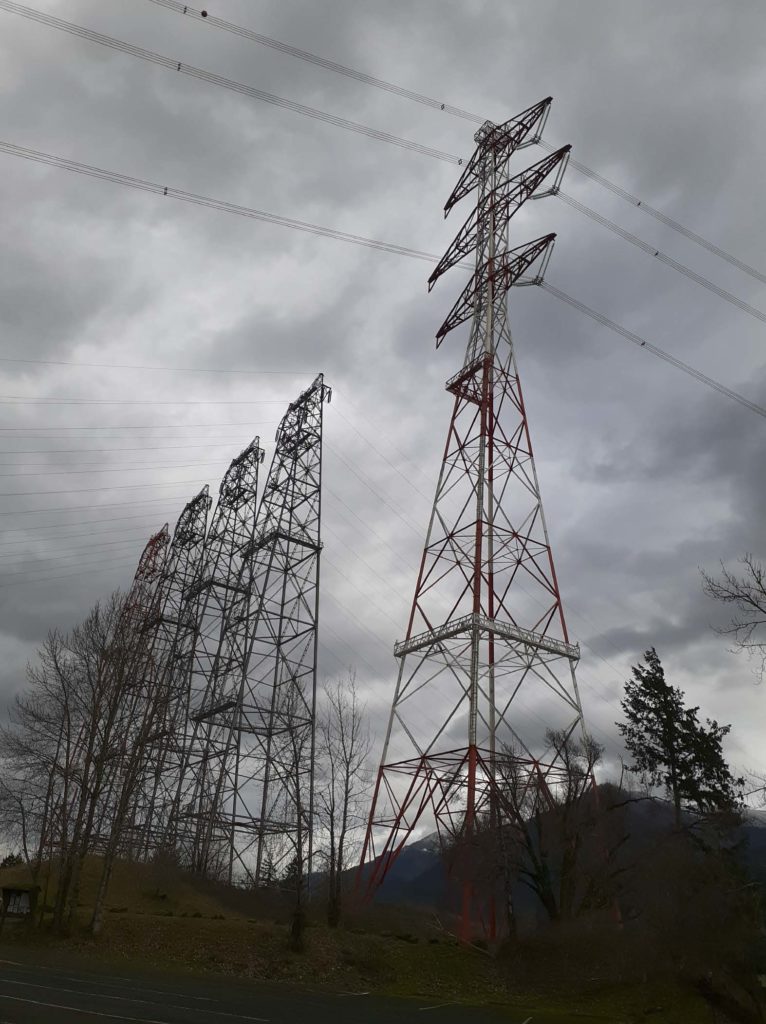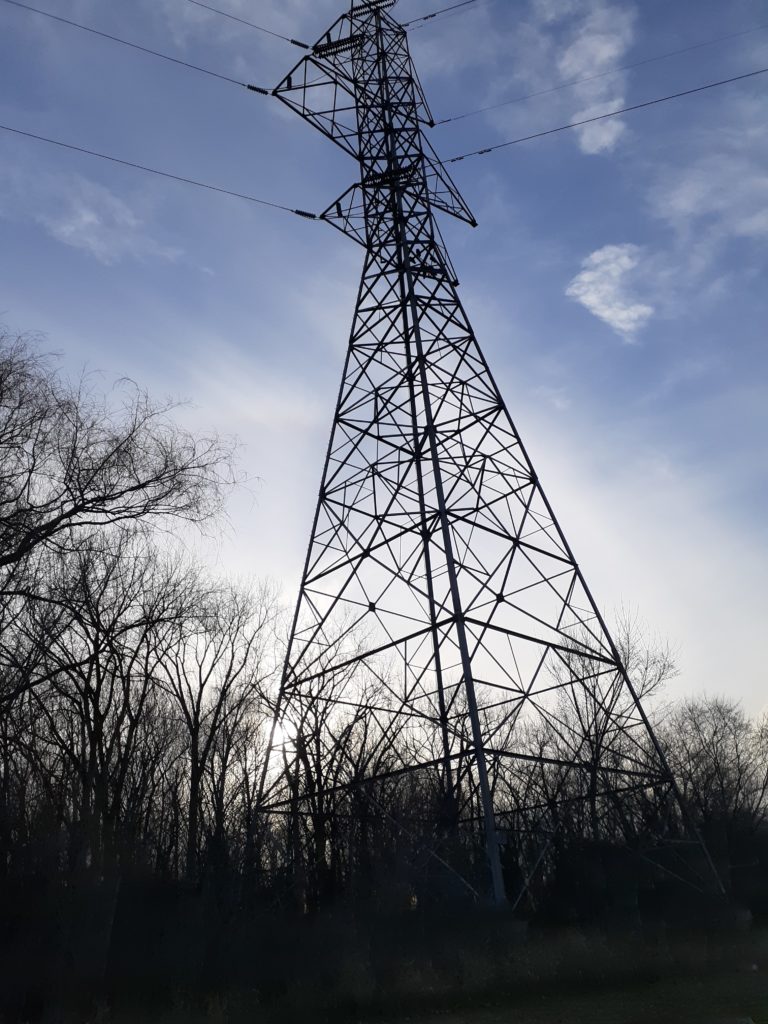Federal transmission permitting authority grab
September 9th, 2023
My head is going to explode… they’re trying again to expand geographic areas branded “National Interest Electric Transmission Corridors” and Designation of NIETCs with expanded criteria triggering the opening for the feds to grab that permitting authority. They call it a Transmission Facilitation Program. Their dreams of transmission are based on the DOE’s National Transmission Needs Study. Compare that with the most recent NERC Long-Term Reliability Assessment. The DOE is for some reason not relying much on the “NERC Report.”
And along with that, there’s THIS rulemaking, to establish procedure for federal review of transmission proposals. I was reminded of this rulemaking thanks to a DOE Grid Deployment Office email, so here’s a reminder for all of you!
There was a webinar a couple weeks ago, I did participate, got nominal comments in, but this needs serious work on detailed well-founded comments. From the DOE page:
DOE is now seeking public comment and feedback on the proposed CITAP Program via a Notice of Proposed Rulemaking. Comments must be received by11:59 p.m. ET on October 2, 2023.
Really, READ THIS and get to work:
NIETC transmission – here we go again
May 15th, 2023
Just in, and enlivened links are here:
- National Interest Electric Transmission Corridors (NIETC) Designation Process and how to provide feedback.
- Registration is required – register at this link.
- NIETC Designation Process Fact Sheet (May 2023)
- Arguably based on the National Transmission Needs Study (Needs Study)
- Notice of Intent (NOI) and Request for Information (RFI)
ARRRRGH, makes me sick…
NIETC Transmission Corridors… AGAIN? MORE?
May 12th, 2023

Here we go again. The DOE has announced another round of National Interest Electric Transmission Corridors and maybe coming to your community!
The most important info isn’t published yet, but once it is, and we know all the details:
The Notice of Intent and Request for Information: Designation of National Interest Electric
Transmission Corridors will be published May 15, 2023, at that time, the blanks will be filled in:
DOE wants our comments on transmission “facilitation”
May 22nd, 2022
On May 12, 2022, the DOE released a “Notice of Intent and Request for Information Regarding Establishment of a Transmission Facilitation Program.” Comments are due June 13. Here’s the Federal Register publication:
https://www.govinfo.gov/content/pkg/FR-2022-05-12/pdf/2022-10137.pdf
One aspect that particularly concerns me is focus on NIETC transmission corridors, designated more than a decade ago, 2005 to be precise, and also containing a category of claimed need for “transmission across more than one state or transmission region.” That criteria would apply to almost every transmission project I’ve worked on, although most were segmented (so that the full extent of the project would not be considered or evaluated, DOH!):
What to comment on? Go to the above Federal Register link, and specific issues for comment start on page 6, “Questions for Requests for Information.” However, if you know of issues that should be considered but are not specified, have at it, put it down in detail.
I do get a little paranoid when they request comments on subjects like this — that “barriers to transmission” is one often raised by Beth Soholt, WOW (now as “Clean Grid Alliance” even more directly identifiable as transmission toadies), and here it is:
Comments are due by June 13, and should be sent to the “Federal eRulemaking Portal” (the only option), and must include the “agency name and identifier.” The agency is “Grid Deployment Office, Department of Energy.”
A decade ago or more, our state agencies eliminated consideration and scrutiny of “need” for transmission by making transmission a “regional” and market matter, making state permitting review nothing more than a rubber stamp. There’s never been a transmission proposal that state agencies didn’t love, rubber stamping everything that came their way. Now that fossil is to be shut down, that should free up immense capacity, but you’ll note that that doesn’t ever seem to be in the mix. Even NERC notes that fossil generation isn’t projected to decrease much, and locally, a good example is GRE’s walk-back on their promise to close Coal Creek, and instead “sold” the plant and transmission, and signed PPA to buy the Coal Creek generated energy.
Here’s NERC’s 2021 Long Term Reliability Assessment’s projection of MW of resources, note that coal doesn’t seem to be going anywhere anytime soon:

If shuttering down fossil is not incorporated into the transmission capacity “need,” exactly what are they basing the “need” claim on? Inquiring minds want to know.
Anyway, do check out the request for comments and let them have it. There are a many specific issues presented that has something for everyone!
What does Obama’s Xmsn push mean?
October 10th, 2011
Aside from unprecedented corporate toadyism? Bowing to corporate greed at public expense? Methinks it means that the feds are stomping on states’ rights, and the states will fiercely fight to preserve their authority. Despite assurances by DOE’s Lauren Azar that they won’t be doing anything they already can’t do, I’m beyond skeptical.
The feds will have one big fight on their hands, a la the fight about states’ rights, whether for consultation on NEITC transmission or their right to deny transmission permits under the NIETC regs:
NIETC designation of corridors tossed out by 9th Circuit Court!!
Denial is NOT withholding… Piedmont v. FERC
Obama’s transmission push is ostensibly based on a Memorandum of Understanding that was signed by federal agencies, note that it is about “federal lands.”
CLICK HERE for the page that claims they’ll “expanding the scope of activity beyond federal lands.” How long before they change that sentence?!?!
For lots of info about this from a more easterly perspective check here:
Here’s what it could mean in practice – a $60 million pay-out to allow the line to go through:
Obama Administration Draws Criticism For Fast-Tracking Transmission Line Project Through National Park Units
Submitted by Kurt Repanshek on October 10, 2011 – 1:41am
A decision by the Obama Administration to fast-track seven power transmission line projects, including one through several units of the National Park System, has drawn condemnation from conservation groups.
Interior Secretary Ken Salazar says the fast-tracking shows the administration’s commitment to developing “the kind of critical infrastructure we should be working together to advance in order to create jobs and move our nation toward energy independence.”
But the secretary seems tone-deaf to groups that oppose the transmission project that would run across the Appalachian National Scenic Trail and through the Delaware Water Gap National Recreation Area and the Middle Delaware National Scenic River.
“The Obama Administration has failed to protect three popular national park sites in New Jersey and Pennsylvania with today’s decision to include the controversial Susquehanna-Roseland power line project on its list of fast-tracked transmission projects,” said Bryan Faehner, the National Parks Conservation Association’s associate director for park uses.
“Susquehanna-Roseland proposes to build massive 200-foot towers and power lines across the Delaware Water Gap National Recreation Area, the Middle Delaware National Scenic River, and the Appalachian National Scenic Trail in New Jersey and Pennsylvania. Delaware Water Gap alone enjoys more than five million visitors annually – most of which come from nearby urban areas – seeking the park’s inspiring views and outstanding recreational opportunities,” he added.
“Building massive power lines across these parks will harm the very resources they were designated to protect. This development can only harm visitors’ experience to the parks and puts economic benefits to local communities at risk. Unlike other proposals mentioned on the administration’s list, the Susquehanna-Roseland power line proposal would not help bring renewable energy sources on-line. Instead, it would transmit electricity produced by dirty coal-fired power plants.”
Last month Delaware Water Gap officials announced that a new alternative developed by the applicants has been added to their environmental analysis of the project, alternative 2b. Alternative 2b would be built within the existing right-of-way of the applicants’ original proposal, alternative 2.
“Under alternative 2b, the applicants would not request any additional ROW. They have stated they can safely operate the new line within the existing ROW, which has some sections 100 feet in width,” the NRA officials said at the time. “Construction would still require additional clearing for access roads and other features.”
The administration’s announcement last week to fast-track the project also was criticized by Public Employees for Environmental Responsibility, which said the decision “is a move to bypass proper environmental review designed to protect one of the most scenic areas of the entire national park system.”
“We do not object to fast-tracking projects as long as political appointees follow the laws protecting parks and the environment–but that hasn’t happened here,” said PEER Executive Director Jeff Ruch in a press statement. “Using jobs as a pretext is misplaced. More jobs can be created by protecting parks than by trashing them.”
PEER contends that Secretary Salazar, National Park Service Director Jon Jarvis, and other Interior officials have met repeatedly with project proponents, PPL Electric Utilities of Allentown, Pennsylvania and Public Service Electric and Gas Company of Newark, New Jersey, and have already approved a route for a new power line that will cut across the Delaware Water Gap NRA and the Appalachian Trail.
As part of the deal, PEER said the draft EIS will not consider at least two alternatives that would lessen impacts to the park’s scenery but will include at least one alternative (2B) demanded by the companies that is untenable from a safety perspective. The secretary and the director have unofficially committed to the companies that the NPS will select Alternative 2, the alternative preferred by the companies but which is the most damaging to the resources and scenery of the parks, PEER argued. In return, the companies have reportedly agreed to pay $60 million for land acquisition and administration inside and near the NRA.
“This is not ‘fast track,’ it is a short circuit in which political appointees are putting their thumbs on the scale to skew the review process,” Mr. Ruch added. “It is one thing to select an alternative after the conclusion of the NEPA process, but is something else to decide on the alternative before public comment has even begun.”
© Copyright 2011 National Park Advocates, LLC.







